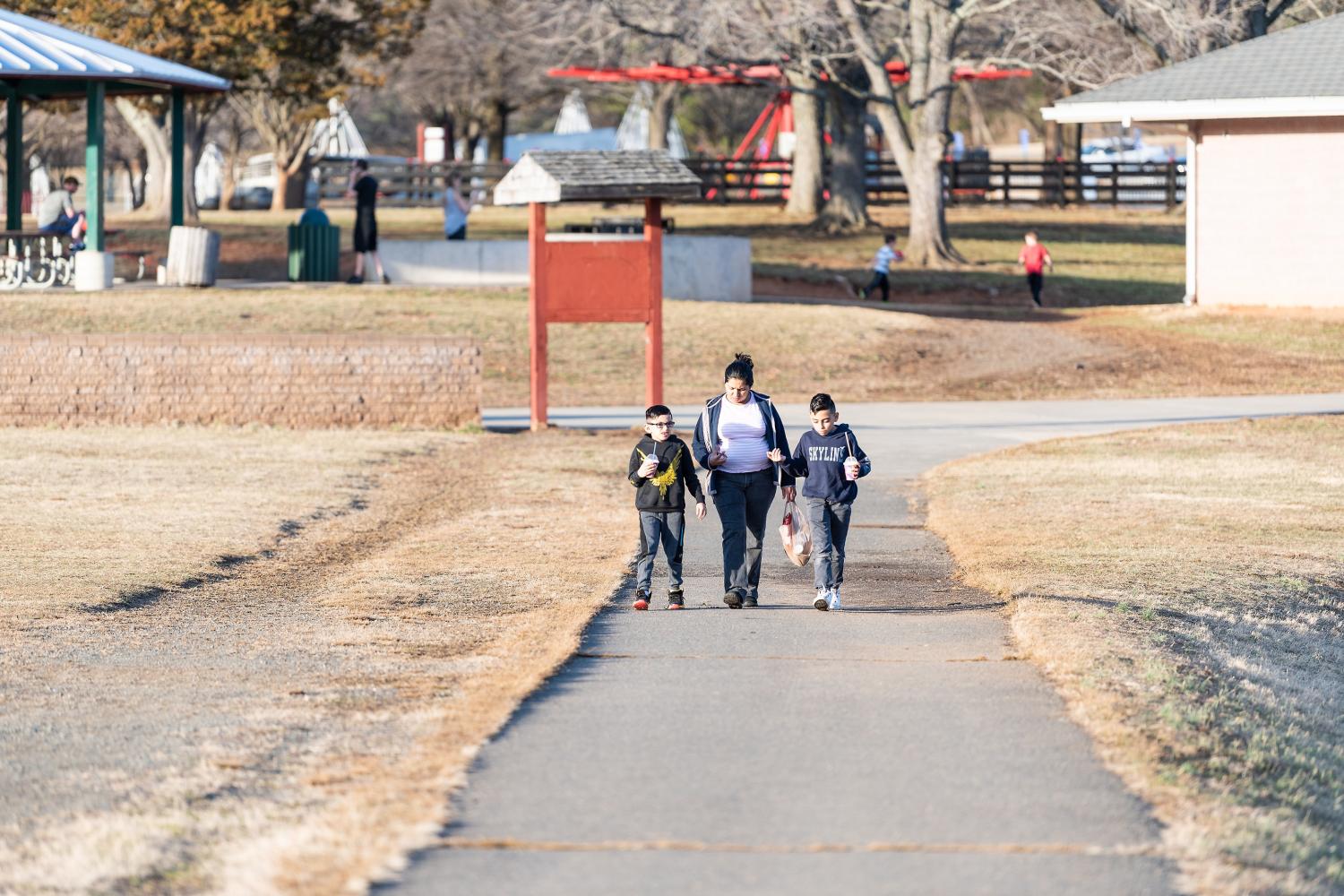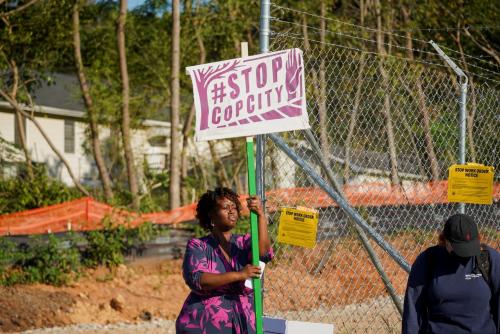The state of race-ethnic neighborhood segregation on the eve of the 2020 census
When the 2020 census results are released next year, they will show that America’s population is more racially diverse than ever before, with four out of every 10 residents projected to identify as a nonwhite racial group.
Yet, in the average neighborhood where white residents live, racial diversity will be far less common. Moreover, most Black and Latino or Hispanic residents will continue to live in neighborhoods where whites represent a much more modest presence than in their larger community.
These likely outcomes of the national headcount are based on an analysis of the 2014 to 2018 American Community Survey (ACS) data released at the end of last year. They show continued broad variation in Black and Latino or Hispanic segregation across the country. Yet even in the most racially diverse metropolitan areas, white, Black, and Latino or Hispanic residents still live in areas that are not reflective of their entire region’s racial and ethnic diversity.
Segregation persists in white neighborhoods
America’s increased diversity over this century is reflected in the rapid population growth of Latino or Hispanic Americans (the nation’s largest minority), Asian Americans, and persons identifying as two or more races—along with smaller gains in Black and Native American populations. All together, these groups increased by 51% between 2000 and 2018, compared with just a 1% increase in the white population.
The broader growth of race-ethnic minorities compared to whites should, by itself, lead to greater diversity at all levels of geography. Yet at the neighborhood level, long-standing patterns of segregation—while declining since the peak years of the 1960s—still persist.
This pattern is evident in the combined populations of the nation’s 100 largest metropolitan areas. As displayed in Figure 1, the metropolitan race-ethnic profiles for these areas shift between the 2000 census and the 2014 to 2018 period, such that the white share of their populations is reduced from 64% to 55%. However, the white share of populations in the neighborhood in which the average white person resides remains much higher: 79% in 2000 and 71% in 2014 to 20181. In other words, even though both the metropolitan area and the “white-resident neighborhood” population became less white since 2000, the racial gap between the two had not closed.

Moreover, the white share of the population in white-resident neighborhoods is even greater in smaller metropolitan areas and outside metropolitan areas: 79% and 85% white, respectively. This demonstrates that the neighborhood experience of the average white U.S. resident is far different than the national demographic profile would suggest.
Because metropolitan areas differ in their racial diversity profiles, the neighborhood exposure of whites to other whites and racial minorities will change for individual metropolitan areas. To illustrate, Figure 2 displays for selected highly diverse metropolitan areas: the white share of the metropolitan area population along with white shares of its average white-resident neighborhoods.

In all cases, average white-resident neighborhoods have higher shares of whites than their metropolitan areas. For example, while less than half (48%) of the Atlanta metro area is white, whites comprise fully two-thirds (67%) of populations in white-resident neighborhoods. In Los Angeles, where whites comprise just 30% of metropolitan residents, they comprise 53% of white-resident neighborhood populations.
Among the nation’s 53 metropolitan areas with populations exceeding 1 million, all display higher white shares in the populations of their average white-resident neighborhoods than for their larger metropolitan populations. This is the case in even the least-diverse metropolitan areas such as Minneapolis-St. Paul, Providence, R.I., and Pittsburgh. (Download Table A)
While all of these metro areas showed decreases in both the white shares of their total populations and in their white-resident neighborhood populations since 2000, the latter did not decrease as much as the former for the vast majority. For example, the white share of Phoenix’s metropolitan population was reduced by 10% (from 56% to 46%), but the white share of its average white-resident neighborhood population was reduced by just 6% (from 75% to 69%).
It is also worth noting that when white-resident neighborhoods saw a decrease in their white population shares, it was less likely due to an increase in Black residents and more likely from an increase in Latinos or Hispanics, Asians Americans, and persons of two or more races. Hence, areas where white neighborhoods became more diverse tended to be those with substantial metropolitan-wide gains in their Latino or Hispanic and Asian American populations, such as Miami, San Jose, Calif., Las Vegas, and Orlando.
Black and Latino or Hispanic Americans live in far more diverse neighborhoods
Just as white neighborhoods continue to remain “whiter” than their surrounding metropolitan areas, it’s also the case that neighborhoods where average Black and Latino or Hispanic populations reside continue to include overrepresentations of those groups (see Figure 1).
In the case of Black residents, two items should be stressed. First, the Black share of the overall population in the 100 largest metropolitan areas is similar in both 2000 and from 2014 to 2018. Second, the Black share of average Black-resident neighborhood, while higher than the metropolitan Black share, decreased between 2000 and 2014 to 2018.
A closer look at the change in Black-resident neighborhoods reveals that this decrease is almost entirely counterbalanced by an increase in the neighborhood’s share of Latinos or Hispanics, Asians Americans, and other races. The increase in the white share of these neighborhoods, however, is minimal. Thus, it appears that “integration” in these Black-resident neighborhoods is attributable to gains in other racial and ethnic minorities.
This picture is also replicated in a large number of metropolitan areas with populations over 1 million (Download Table B). In each of these 53 areas, the Black share of populations in Black-resident neighborhoods declined since 2000. In more than half, the white population share in Black-resident neighborhoods also declined. This means that Latinos or Hispanics, Asians Americans, and persons of two or more races are responsible the increased diversity in Black-resident neighborhoods.
Yet even as diversity increases in Black-resident neighborhoods, the Black shares of their populations are larger—generally much larger—than Black shares of the metropolitan population. This is illustrated for selected metropolitan areas in Figure 3.

The biggest disparities in Black representation between Black-resident neighborhoods and their metropolitan areas tend to be in older metro areas with stagnating Black populations, including Chicago, Detroit, and Philadelphia. Smaller, though still large, disparities are evident in areas with recently rapid-growing Black populations such as Houston, Atlanta, and Charlotte, N.C.
The story of the Latino or Hispanic population differs from Black or white populations due to the group’s substantial metropolitan-wide growth. The Latino or Hispanic share of the population increased in most metropolitan areas since 2000, and in most Latino or Hispanic-resident neighborhoods. And in those neighborhoods, the rise in the Latino or Hispanic share of the population is mostly accompanied by a decline in the white share of the population. (Download Table C)
Nonetheless, the average Latino or Hispanic-resident neighborhood typically houses a greater share of Latino or Hispanics than the larger metropolitan area. This is illustrated for selected metro areas in Figure 4.

Mapping segregation
Another way to look at neighborhood segregation is with a segregation index, sometimes known as a dissimilarity index. This index measures the extent to which two different groups, such white and Black populations, are unequally distributed across neighborhoods in a single metropolitan area. The index can range from 0 (complete integration) to 100 (complete segregation), where its value represents the percent of one group (e.g., Black residents) which would need to relocate to be distributed across neighborhoods equally with the other group (e.g., white residents).
Interactive map 1 displays these patterns for Black-white segregation among metropolitan areas in 2014 to 20182. The segregation values range from 41 in Las Vegas to 79 in Milwaukee. Thus, in Milwaukee, nearly eight in 10 Black residents would need to change neighborhoods to be distributed similarly to whites; in Las Vegas, it’s only about four in 10.
The regional patterns partly reflect recent decades’ Black migration to the South. In the 1960s, segregation levels were higher everywhere due to well-documented discriminatory practices by lenders, realtors, and government agencies. The 1968 Fair Housing Act outlawed many of those practices, but had its biggest impact in the South, where large waves of Black Americans began to move.
…
Map 1: Black-white segregation in U.S. metro areas, 2014-2018*
…
*51 metropolitan areas with populations exceeding 1 million and Black populations of at least 3% of the metro area population.
**Segregation index is the dissimilarity index which represents the percent of Black residents that would need to relocate to be fully integrated with white residents across metropolitan neighborhoods.
Source: William H. Frey analysis of 2014 to 2018 American Community Survey
Afterward, segregation levels markedly declined in southern metro areas such as Atlanta, Dallas, and Houston, and stayed low in western metro areas. Today, many metro areas in the South and West register index values below 60. In contrast, many northern areas with long-stagnating Black populations continue to show segregation levels into the 70s, reflecting the persistence of past patterns. Still, these areas have shown recent (though small) declines in segregation. (Download Table D)
Latino or Hispanic segregation with whites is, on the whole, lower than Black segregation with whites, ranging between index values of 31 (for Jacksonville, Fla.) to 61 (for Los Angeles)3. Areas with higher Latino or Hispanic segregation scores (those above 50) tend to be long-standing immigration magnets or areas in the Northeast with substantial Puerto Rican populations. Less segregated areas tend to be located in new destinations for Latino or Hispanic residents, located heavily in the Southeast and increasingly in the nation’s heartland. As is the case with Black-white segregation, recently, the segregation levels between Latinos or Hispanics and whites has modestly declined. (Download Table E)
Map 2: Latino or Hispanic-white segregation in U.S. metro areas, 2014-2018*
…
*52 metropolitan areas with populations exceeding 1million and Latino or Hispanic populations of at least 3% of the metro area population.
**Segregation index is the dissimilarity index which represents the percent of Latino or Hispanic residents that would need to relocate to be fully integrated with white residents across metropolitan neighborhoods.
Source: William H. Frey analysis of 2014 to 2018 American Community Survey
As we await the 2020 census results, these recent American Community Survey data suggest that segregation is still quite prevalent in the United States. More than a half-century after the civil rights movement and fair housing legislation, whites continue to reside in mostly (and often largely) white neighborhoods, even as the nation’s overall population becomes much more racially and ethnically diverse.
These patterns have changed only modestly since the 21st century began. While measurable progress in closing the nation’s racial divide has been made on many fronts— including in educational attainment, hiring, and the rise in multiracial marriages—race-ethnic segregation in American neighborhoods represents an area where historical patterns are slow to change.
-
Footnotes
- The neighborhood (census tract) racial make-up for the average white (or Black or Latino or Hispanic) resident in the metropolitan area is the weighted average of racial compositions of all neighborhoods in the metropolitan area, where weights represent the sizes of each neighborhood’s white (or Black or Latino or Hispanic) population. This measure is sometimes referred to as an “exposure” measure, indicating the neighborhood racial-ethnic make-up to which the average white (or Black or Latino or Hispanic) resident is exposed.
- The metropolitan areas shown in Map 1 are the 51 metropolitan areas with populations over 1 million and where Black residents comprise at least 3% of the population.
- The metropolitan areas shown in Map 2 are the 52 metropolitan areas with populations over 1 million and where Latino or Hispanic residents comprise at least 3% of the population.
The Brookings Institution is committed to quality, independence, and impact.
We are supported by a diverse array of funders. In line with our values and policies, each Brookings publication represents the sole views of its author(s).




